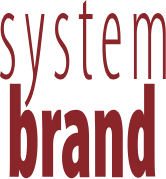The Roller Coaster Supply and Demand Drive
Barely has the Philippine economy recovered in the first half of 2021 with a 3.7% YOY expansion from a contraction in 2020, it now faces another possible supply chain disruption with the Federal Reserve interest rate hike slated over a forecasted total of four rates increases by end 2022. Cost of operations and loans (moreso for corporations) will be more expensive; higher prices will lead consumer spending abroad to a decline and also to imbalances in trade. Demand may be faced with scarcity of supply.
Supply chain starts with product and packaging development to facilitate marketing, operations, customer service, transactions and achieving an ROI geared to re-start the demand and supply cycle.
Product development originates with a concept and target market, identifying and sourcing raw materials and the production entailed. The responsibilities involved are getting regulatory certifications aligned with government policies (from here and abroad) and global sustainability goals.
ASEAN with the Regional Comprehensive Economic Partnership (RCEP), now the world’s largest free trade bloc, has set standards for “labelling, marking and packaging requirements through the ASEAN Trade Repository (ATR)”. For packaging structure, ATR regulates the mode in which goods must be or cannot be packed or define the packaging materials to be used.
The Asian Packaging Federation (APF) unites the packaging interests of all trade and industries in the region like of the Packaging Institute of the Philippines (PIP), represented here by ex-PIP President Joseph Jocson.
Logistics, the supply chain management of the process of acquiring, storing and transporting goods to their final destination, are monitored by ASEAN – for its connectivity to seaports, airports to land transportation. ASEAN transhipment hubs are global with Singapore as the busiest seaport, handling 1/7 of the world’s shipment throughput. Six other ASEAN ports including the Philippines made it to the World Shipping Council (WSC).
International Container Terminal Services of Filipino logistics giant, Ricky Razon, handles 34 terminals in 20 countries.
Major ASEAN international airports are led again by Singapore, this time, the Changi Airport, capable of handling 2 million tonnes of cargo annually, servicing 6,500 weekly flights and connecting 240 cities in 60 countries.
But as huge and progressive the Supply Chain industries are, they remain vulnerable to the ups or downs of global economies with Supply going its own way from Demand – upward or downward, forward or backward, sideways left or right. Finance.yahoo.com reports that a “total of 103 vessels backed up at West Coast hubs made Fed Chair Jerome Powell to say that stalled shipping and the constraints on goods is hurting the economy, contributing to the consumer price increases.”
In the Philippines, inflation is a challenge to control similar to Fed’s attempt in the US that’s affecting different segments of the economy. The fate of the balance of trade with a surge in Demand and prices in view of scarcity in supply (and a weak outflow of goods) is telling on the capital markets and the possible depreciating value of the Peso. The pandemic is slowing down operations and trade and is determining the state of the economy.
So, brace yourself, securely fasten your seatbelts and be prepared to face a dizzying ride and heavy strong winds.

